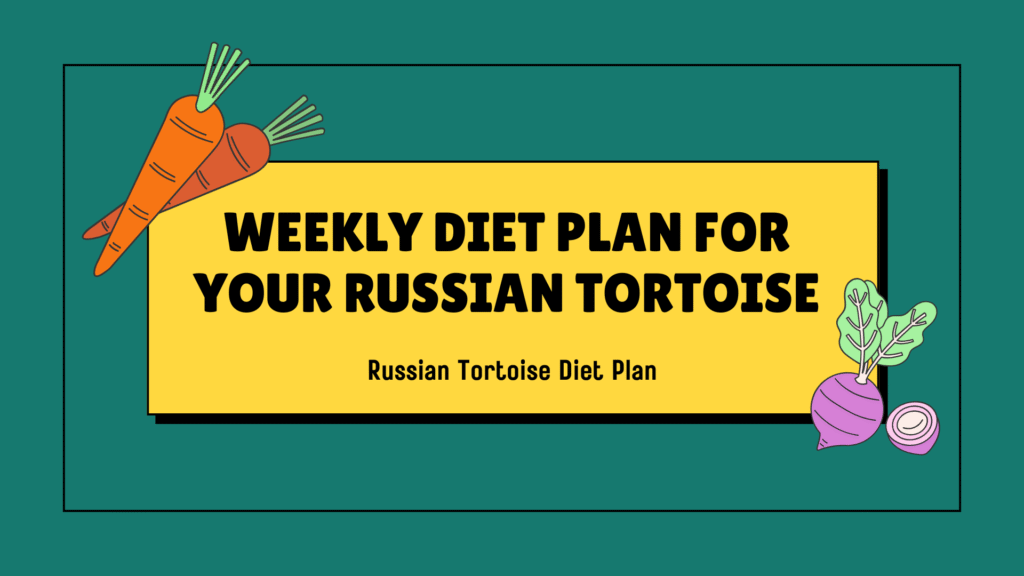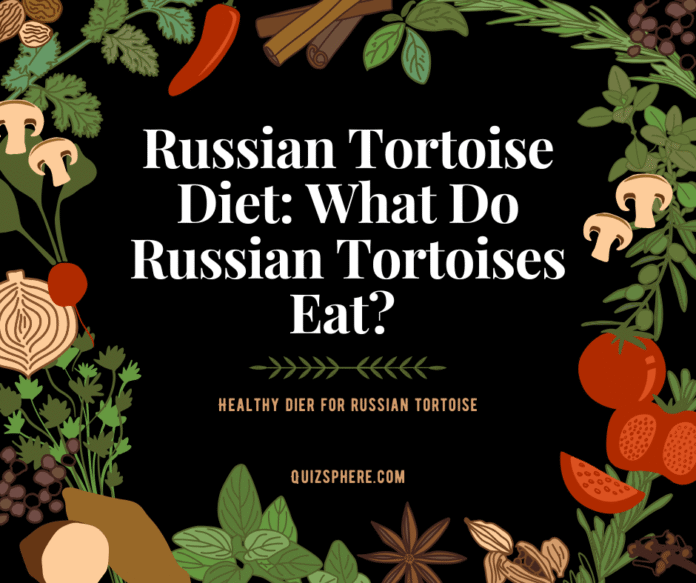Russian Tortoise Diet: What Do Russian Tortoises Eat?
If you have or plan to get a Russian tortoise as a pet, it is vital to understand their diet. Proper nutrition helps tortoises maintain healthy development, longevity, sharpen immunity, and improve well-being. This article is written to explain the possible health concerns associated with feeding certain foods to a Russian tortoise diet, highlight its most appropriate cuisines along with providing dietary and health recommendations about comprehensive care.”
The Complete Guide to the Russian Tortoise Diet
As an herbivorous creature, the Russian tortoise (Agronomy’s Horsfield) forages in shrubbery regions and requires specific food that is fibrous yet low in protein and desert-calcium dense like shrubs of the desert region. Adaptable shrubs provide adequate greens and wild grass. It is essential that these reptiles are kept in captive environments that can be prepared within their natural diets because if not provided leads to severe depression social withdrawal illness resulting in shell deformities amongst other ailments, obesity, and metabolic bone disease.
The healthcare motivations behind owning a pet tortoise require deeper investigation concerning the dietary choices made, therefore this article reports on all tortoise owners concerned about their healthy feeding habits for these shelled creatures. Understanding proper nutrition explains how caring for the diet of a pet, especially a Russian tortoise, supports good health.
How Proper Nutrition Makes A Difference with Your Russian Tortoise Diet
Your Russian tortoise’s nutrition helps what your pet carries out:
- Improvement in shell and bone growth
- Immunity function
- Energy levels and activity during the day
- Functions of gut health
- Life expectancy
Some bones become usually weak and brittle in absence of essential nutrients leading to osteoporosis alongside lethargy, organ failure, parasitic infections, abnormal shell pyramiding, as well as fragile bones.
Recommended Diet for A Russian Tortoise
1. Leafy Greens (Core of The Diet)
Strikingly diverse list of leafy greens are best practices as core diet stable. Whenever possible purchase organic or pesticide free ones to fulfil 70–80% of their diets.
The best options include these:
- Chicory
- Escarole
- Endive
- Dansylate greens
Less common choices:
- Dandelion Greens
- Turnip greens
- Collard Greens
- Also called mustard greens.
Even though spinach and kale are popular, they shouldn’t be consumed because of the high oxalate content which binds calcium and limits circulation in the body when taken in excess.
- Weeds and Flowers That Can Be Eaten
Considering some weeds or flowers would help develop proper styled diet plans for your Russian tortoise diet; making sure they are safe adds fiber while essential nutrients.
Safe Options Include:
These helps provide what we aim to what these animals eat in nature.
- Hibiscus leaves/flowers
- Clover Plantain Leaves
- Unsprayed Rose Petals
- Nasturtiums
- Marigolds
- Chickweed
- Sow Thistle
- Non-stem or leaf Vegetables (in small amounts)
To achieve balanced meals, non-stem or leaf vegetables should be added but very little variety work best.
Best Choices:
- Avoid sweet potatoes or corn as these tend to be up there in sugar content.
- Fruits (Limited to Very Small Portions)
- Zucchini Very small portions of bell peppers Carrot top Spineless cactus pads Grated squash
In the case of a wild Russian tortoise, fruits do not belong on the diet list as they do not exist in nature. Nonetheless, fruits can be provided once or twice a month at minimum.
- Fruits That Are Allowed:
- Strawberries
- Blueberries
- Apples (no seeds)
- Papaya
Covering Entire Diet Off-Limits Plants Avoid/Off-Limits for Tortoises
Not all plants and vegetables are safe for tortoises. To help prevent serious health complications from poisoning, avoid eating:
Toxic or Harmful Foods:
- Processed foods
- Iceberg lettuce (nutritionally deficient)
- Spinach (high oxalate food)
- Kale (goitrogen-rich food)
- Citrus fruits
- Animal proteins
- Bread & Pasta
- Avocado
- Rhubarb
Calcium and Supplements Question
With nutritious pellets based on grass and hay also pumpkin, tortoises require calcium supplements to promote healthy bones and shells.
Calcium Sources Are:
Cuttlefish Bone- need to be available within enclosure at all times. Children need cattle fish bone powder with vitamin D3 sprinkled on them 2-3x per week Channelling sunlight or UVB lights will aid in metabolizing calcium in bones while enabling vitamin D uptake in the body needs proper ventilation too for its deficiency.
Note: Abusing calcium supplements, like neglecting to provide them, creates equally grave dangers. Balanced intake within specified nutrition ranges appropriate for age and health conditions are critical.
Feeding frequency: Portion sizes
Daily Tasks
Mornings, when your tortoise is most active, are the best times to feed him.
Remove any uneaten food after 2-3 hours. Fresh water should be provided daily in a shallow dish which must be changed daily. Provide fresh water daily in a shallow bowl but ensure it’s changed every day.
Portion Control
Provide Approximate Portion Shell: A tortoise’s shell will determine the amount of feed allocated to him. This should be adjusted according to your pet’s life stage, activity level, and health and fitness.
Water & Hydration:
Tortoises get their moisture mainly through leafy foods. They require clean drinking water; however not as much as other pets do.
Ideas & Suggestions:
Because shallow containers stop toddlers from drowning, they can also be used to offer baby tortoises water. Soaking infant tortoises two to three times per week for 15-20 minutes while adult tortoises can be soaked once per week.
Brumation Period and Feeding Guidelines
Reptiles will cut down food intake during brumation. Like with your tortoise, if he seems sluggish and wants to begin brumating, it might be smart to give him less food or none at all.” You should consult a doctor before starting the feeding break.

Sample Weekly Diet Plan for Your Russian Tortoise
| Day | Main Greens | Extras (Optional) | Calcium Powder? |
| Monday | Dandelion, Collard | Clover flowers | Yes |
| Tuesday | Mustard, Endive | Bell pepper slices | No |
| Wednesday | Turnip, Chicory | Carrot tops | Yes |
| Thursday | Romaine, Escarole | Zucchini (grated) | No |
| Friday | Dandelion, Plantain | Marigold petals | Yes |
| Saturday | Collard, Mustard | Hibiscus flower | No |
| Sunday | Fasting day (optional) | Water only | No |
Nutrition Mistakes:
Not properly managing feeders results in curious children growing diminutive fruits for tortoises. Kids don’t get enough calcium and clean UVB light. It’s very common to give kids the same food too often without changing out different ones. Food covered in pesticides is served.
Water is mismanaged often as well.
FAQs: Most Common Received Questions
Q1: Can Russian tortoises eat tomatoes?
Tomato slices are advice not to be given too liberally because it can come off as overly acidic.
Q2: When is the best time to feed a Russian tortoise?
The most effective way to feed them is in the morning. You may consider skipping one feeding during the week, which reflects more closely to their natural eating rhythms.
Q3: All Russian tortoises drink water, correct?
Yes, they do. Aside from shallow containers, they also drink while soaking through skin absorption of softs part water.
Q4: My tortoise’s diet appears perfectly balanced, what are the indicators?
Balanced diet indicators include firm-shell, clear eyes, active movement including walking or swimming and normal defecation. If ever unsure a reptile vet can be approached.
Conclusion:
Your pet’s health depends greatly on how well you cater nutrition tailored towards his specific dietary requirements Russian tortoise diets demand precision! Complimentary care paired alongside leafy greens, certain safe weeds and limited fruits promotes wellness taken while strategically controlled supports well-being even in captivity transforms caregiving into duty a creature needs nurturance shifts responsibility onto an owner.
Just like making sure your pet is drinking enough water, the feeding routine needs to focus on how much your pet eats each week. The right balance and nutrition strengthen friendship with a lizard for healthy body and mind in the future.
Any concerns regarding feeding schedules or dietary requirements should be handled by expert reptile veterinarians since they will customize plans that address specific issues.



